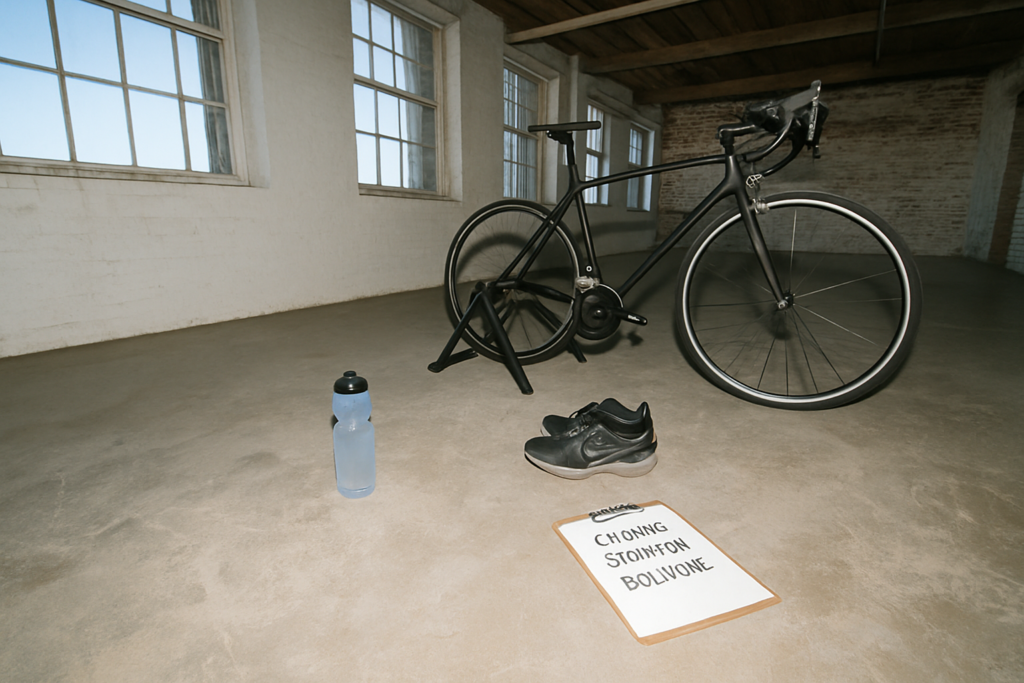The Benefits of Cycling for Weight Loss
Cycling offers numerous advantages for weight loss. It’s an effective cardio workout and has long-term benefits for weight management.
How Cycling Burns Calories
Cycling allows me to burn calories efficiently. A moderate pace can burn approximately 300 calories per hour, while intensive cycling can reach up to 600 calories per hour.
Sustained cycling increases my heart rate, promoting fat burning and boosting my metabolism.
Long-Term Benefits for Weight Management
Cycling not only helps in shedding pounds but also in maintaining a healthy weight. Regular cycling improves my muscle mass, which in turn increases my resting metabolic rate (RMR).
A higher RMR means I burn more calories even when at rest. Cycling also builds endurance and strengthens my cardiovascular system, making it easier to maintain an active lifestyle.
Essential Gear for Effective Cycling
Having the right gear enhances your cycling experience and promotes weight loss effectively.
Choosing the Right Bicycle
Pick the correct bicycle based on your riding terrain and goals. For road cycling, opt for a road bike with lightweight frames and narrow tires. If cycling on trails, a mountain bike with sturdy frames and wider tires suits best.
A hybrid bike offers versatility for both terrains. Ensure your bike fits properly by checking frame size, saddle height, and handlebar position to avoid discomfort or injury.
Visit a professional bike shop for personalized fitting recommendations.
Must-Have Cycling Accessories for Safety and Comfort
Equip yourself with essential accessories to stay safe and comfortable.
- Helmet: Invest in a certified helmet to protect your head in case of accidents. Check for proper fit.
- Lighting: Use front and rear lights for visibility, especially during dawn, dusk, or night rides.
- Reflective Gear: Wear reflective clothing or attach reflectors to your bike to improve visibility to drivers.
- Cycling Clothing: Wear moisture-wicking apparel to stay dry. Padded shorts enhance comfort on long rides.
- Gloves: Choose padded gloves to reduce hand fatigue and improve grip.
- Water Bottle and Cage: Stay hydrated by mounting a bottle cage on your bike’s frame.
- Bike Lock: Use a sturdy lock to secure your bike when parked in public areas.
Selecting and utilizing the right gear significantly contributes to an effective and enjoyable cycling routine.
Developing a Cycling Routine
Establishing a consistent cycling routine is key to losing weight effectively. Regular cycling, paired with proper goal setting and planning, yields the best results.
Setting Realistic Goals
Setting achievable goals ensures steady progress and sustained motivation. Begin by identifying target metrics, such as the number of miles to cycle per week or the amount of weight to lose each month.
Initially, aim for goals you can comfortably reach to avoid burnout. Gradually increase intensity and duration once basic targets are consistently met.
Use SMART goals—Specific, Measurable, Attainable, Relevant, and Time-bound—to stay on track.
Structuring Your Weekly Cycling Plan
A well-structured cycling plan balances frequency, intensity, and recovery to optimize weight loss. Start with three to four cycling sessions per week.
Include a mix of high-intensity interval training (HIIT), longer endurance rides, and active recovery days. For example:
- Monday: 30-minute high-intensity intervals
- Wednesday: 45-minute steady-paced ride
- Friday: 60-minute endurance ride
- Sunday: 30-minute light recovery ride
Adjust the plan based on personal fitness levels and progressively increase these durations and intensities as endurance improves. Ensure rest days to allow muscle recovery and prevent overtraining.
Advanced Cycling Tips and Tricks for Weight Loss

For advanced weight loss through cycling, incorporating specific techniques can make a big difference. Here are some effective methods to take your cycling routine to the next level.
Incorporating Interval Training
Interval training maximizes calorie burn. Alternating between high-intensity bursts and low-intensity recovery periods keeps the metabolism elevated even after the ride.
- High-Intensity Intervals: Aim for all-out efforts of 30-60 seconds followed by 1-2 minutes of light cycling.
- Progressive Challenges: Gradually increase the intensity and duration of high-intensity intervals to push your limits.
- Recovery Periods: Ensure adequate recovery time to prevent muscle fatigue and overtraining.
Terrain Variety and Challenges
Cycling on varied terrains engages different muscle groups and boosts calorie expenditure. Each type of terrain offers unique benefits.
- Hill Climbs: Riding uphill intensifies muscle work, particularly in the legs and core.
- Off-Road Trails: Cycling on trails improves balance and engages stabilizer muscles.
- Flat Roads: Sustained moderate-intensity rides on flat roads enhance cardiovascular endurance.
Using these advanced techniques ensures a more effective and engaging cycling routine, optimizing weight loss and improving fitness levels.
Diet and Nutrition for Cyclists
Diet and nutrition play a crucial role in optimizing cycling performance and weight loss. Consuming the right nutrients and staying properly hydrated enhances endurance and recovery.
Key Nutrients for Endurance
Carbohydrates serve as the primary energy source for cyclists. Consuming complex carbs like whole grains, beans, and vegetables fuels long rides.
Proteins support muscle repair and growth. Lean meats, eggs, and plant-based options like tofu are ideal. Fats provide sustained energy. Healthy fats found in avocados, nuts, and olive oil are beneficial in moderation.
Vitamins and minerals like iron, calcium, and vitamin D support red blood cell production and bone health. Leafy greens, dairy products, and fish are excellent sources.
Hydration Strategies
Proper hydration prevents fatigue and maintains peak performance. Water intake should match sweat loss, which varies by intensity and weather.
Electrolytes found in sports drinks or natural sources like bananas and nuts help maintain balance and prevent cramps. Pre-ride hydration involves drinking 500-750ml of water 2-3 hours before cycling.
During rides, aim to consume 500ml every hour. After rides, replenishing fluids with water and electrolytes aids recovery.
Overcoming Common Challenges
Cycling for weight loss comes with its own set of challenges. Overcoming these obstacles is key to staying on track and meeting weight loss goals.
Dealing with Weather Conditions
Weather variations can disrupt cycling plans. To counteract rainy or cold days, I use indoor cycling options like stationary bikes or online cycling classes. This keeps my routine consistent.
In hot weather, I schedule rides during cooler times, either early in the morning or late in the evening, to avoid heat exhaustion.
Dressing in layers helps in colder conditions, as it allows me to adjust warmth according to body temperature and activity level.
Staying Motivated Over Time
Maintaining motivation is crucial for cycling regularly. I set short-term, achievable goals and celebrate when I hit them. Joining cycling groups or clubs creates a sense of community and accountability, which supports continuous engagement.
Tracking my progress with apps helps me visualize improvements and stay motivated. Mixing up routes and trying new challenges, like different terrains or distances, keeps my cycling experience fresh and exciting.

 I’m Brendamee McCartyierr, and as the founder of Cycle Smooth Ride Long, I'm thrilled to bring you the ultimate resource for all things cycling. Whether you're a seasoned rider or just starting on your cycling journey, our mission is to support your passion for two wheels with trusted advice, insightful reviews, and expert tips.
Cycling is more than just a hobby—it's a lifestyle that promotes health, freedom, and adventure. At Cycle Smooth Ride Long, we’re committed to making your ride smoother, longer, and more enjoyable by providing you with the latest in cycling news, nutrition advice, fitness tips, and gear reviews. We also cater to beginners, offering comprehensive guides to help you get started and build confidence on the road.
I’m Brendamee McCartyierr, and as the founder of Cycle Smooth Ride Long, I'm thrilled to bring you the ultimate resource for all things cycling. Whether you're a seasoned rider or just starting on your cycling journey, our mission is to support your passion for two wheels with trusted advice, insightful reviews, and expert tips.
Cycling is more than just a hobby—it's a lifestyle that promotes health, freedom, and adventure. At Cycle Smooth Ride Long, we’re committed to making your ride smoother, longer, and more enjoyable by providing you with the latest in cycling news, nutrition advice, fitness tips, and gear reviews. We also cater to beginners, offering comprehensive guides to help you get started and build confidence on the road.
